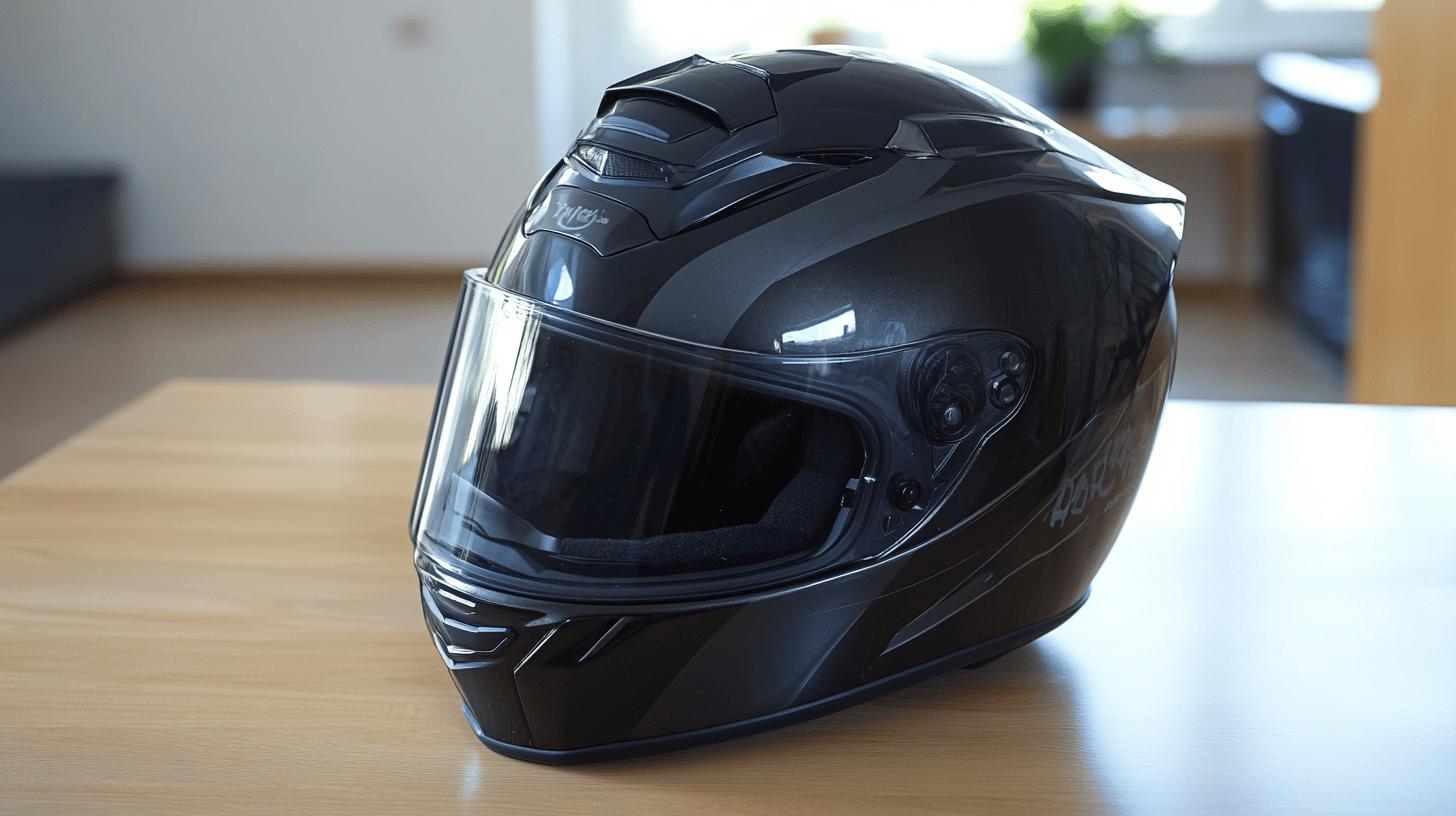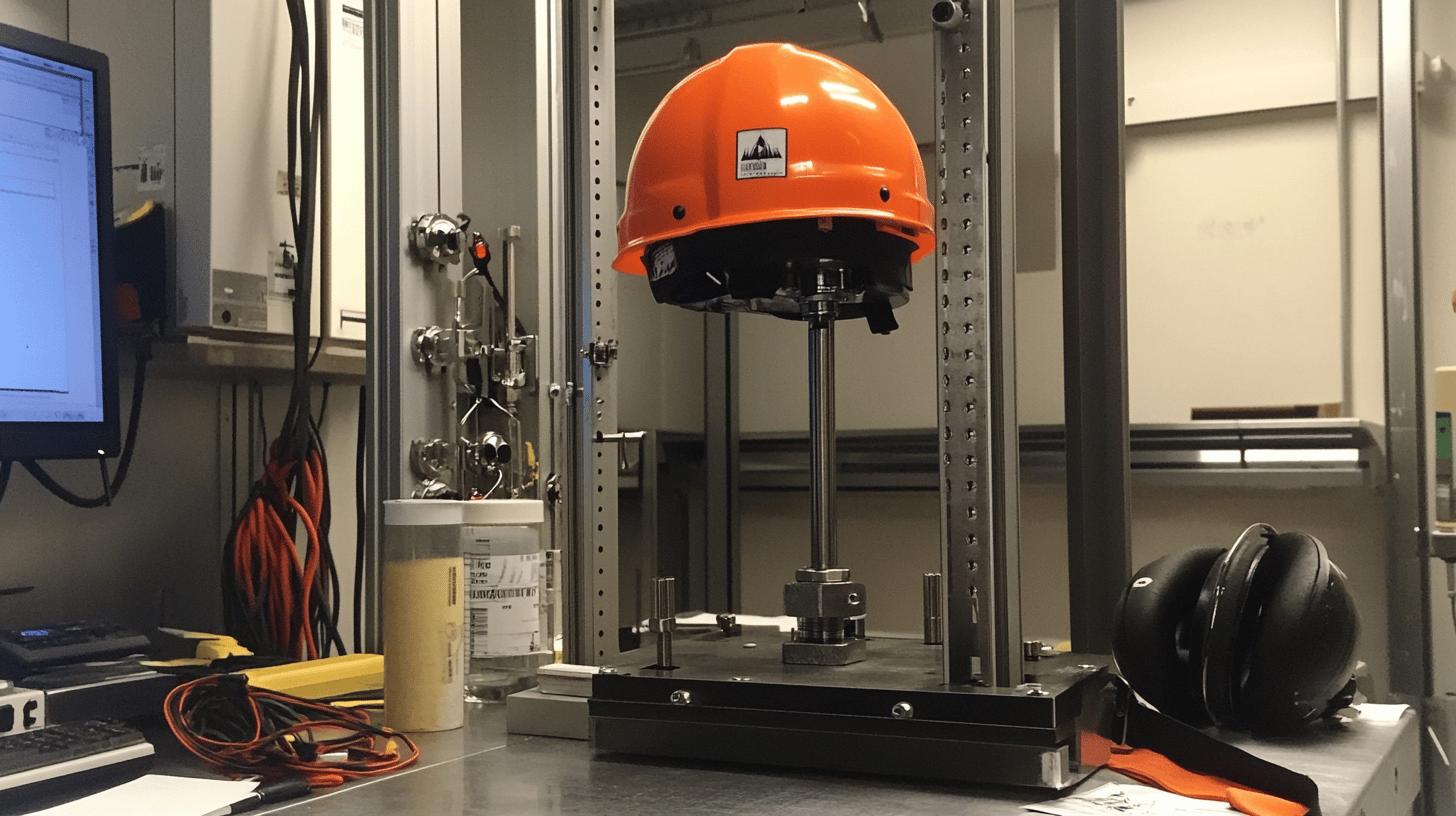Is your motorcycle helmet truly legal, or just a good-looking accessory? Many riders unknowingly wear helmets that don't meet legal standards, putting their safety—and their wallets—at risk.
Understanding what makes a helmet legal isn't just about avoiding fines; it's about ensuring maximum protection on the road. This article delves into the crucial certifications like DOT, ECE, and Snell, breaking down the rigorous standards that separate the legal from the unacceptable.
Equip yourself with knowledge to choose the right helmet and ride with confidence, knowing you're both safe and compliant with the law.
Understanding Legal Motorcycle Helmet Standards

What is a legal motorcycle helmet? A legal motorcycle helmet is one that meets specific safety standards set by recognized certification bodies. These certifications, such as the Department of Transportation (DOT) standards in the U.S., Economic Commission for Europe (ECE) standards in Europe, and Snell certification, ensure helmets provide adequate protection in the event of a crash.
The DOT standards are mandatory for helmets sold in the U.S., while the ECE and Snell offer additional safety assurances. Certified helmets are crucial for compliance with legal requirements and ensuring rider safety.
Helmet certification marks indicate that a helmet has passed rigorous testing procedures. These certifications test for impact protection, ensuring the helmet can absorb significant forces during a collision.
Retention system effectiveness is another critical area, ensuring the helmet stays securely on the rider’s head. Penetration resistance tests verify that sharp objects cannot puncture the helmet. These criteria are vital in protecting riders from severe injuries during accidents.
-
Enhanced protection against head injuries
-
Compliance with legal requirements
-
Increased confidence in helmet performance
- Assurance of quality and durability
The necessity of these standards for legal compliance cannot be overstated. Without proper certification, helmets may fail to deliver adequate protection, potentially leading to severe consequences for the rider. Certified helmets are not just a legal formality but a key component in safeguarding motorcyclists on the road.
Regional Differences in Motorcycle Helmet Laws

Motorcycle helmet laws significantly impact rider safety and legal obligations across various regions. In the U.S., these laws are not uniform, with each state setting its own requirements. 19 states enforce universal helmet laws, requiring all riders to wear helmets.
This widespread mandate helps reduce fatalities and severe injuries, as helmets are proven to decrease the risk of death by 37% and traumatic brain injuries by 65%. The variation in laws can lead to confusion among riders traveling between states, making it crucial for motorcyclists to be informed about regional regulations.
State helmet regulations differ, with some states imposing age-specific mandates instead of universal laws. For instance, states like Texas and Florida have specific age requirements where younger riders must wear helmets, but older riders have exceptions.
Florida allows riders over the age of 21 to ride without a helmet if they meet certain insurance criteria. These differences highlight the need for riders to understand local laws to avoid penalties and ensure compliance.
Non-compliance with helmet laws can lead to legal and financial repercussions. Riders may face fines if caught without a helmet in states where it is mandatory. Moreover, failing to wear a helmet can complicate insurance claims.
Some insurance companies may deny or reduce compensation if a rider was not wearing a helmet during an accident. This non-compliance can also affect legal cases, where contributory negligence might be argued, potentially limiting liability claims.
| State | Helmet Law |
|---|---|
| California | Universal helmet law |
| Florida | Age-specific; exemptions for riders over 21 with insurance |
| Texas | Age-specific; exemptions for riders over 21 with training or insurance |
Understanding helmet laws by region is vital for every motorcyclist. The differences in regulations can affect both safety and legal outcomes in an accident. Being informed and compliant ensures not only adherence to the law but also enhances personal safety on the road.
Key Features of Legal Motorcycle Helmets

Legal motorcycle helmets are engineered with critical elements designed to enhance rider safety. The outer shell is a crucial component, typically constructed from durable materials like polycarbonate or fiberglass. These materials are selected for their ability to withstand significant impacts, distributing force across the helmet's surface to minimize injury.
Beneath the shell lies an impact-absorbing liner, often made of expanded polystyrene (EPS) foam, which cushions the head during collisions by absorbing and dissipating energy. The retention system, commonly a chin strap, ensures that the helmet remains securely in place, preventing it from dislodging during a crash. Proper retention is vital as it maintains the helmet's protective positioning on the rider's head.
Materials play a significant role in determining a helmet's legal status and protective capability. Fiberglass is favored for its lightweight yet strong composition, offering both comfort and safety. Polycarbonate is another popular choice due to its impact resistance and affordability.
These materials form the helmet's first line of defense, working in tandem with the inner liner to provide comprehensive protection. Ventilation and visibility are additional considerations, as they ensure comfort and awareness, preventing distractions and potential hazards on the road.
-
Sturdy outer shell
-
Impact-absorbing liner
-
Effective retention system
-
Adequate ventilation
-
Enhanced visibility
The features of legal helmets are integral to safeguarding riders against injuries. They are meticulously designed to meet protective gear requirements, offering a balance of durability, comfort, and safety. By adhering to these standards, riders ensure not only compliance with legal regulations but also significantly reduce the risk of injury in the event of an accident.
Helmet Safety Testing and Compliance

What tests must helmets pass to achieve certification? Helmets must undergo rigorous testing for impact absorption, penetration resistance, and retention system effectiveness. Impact absorption tests evaluate a helmet's ability to mitigate the force of a collision, ensuring that energy is distributed evenly to reduce the risk of head injuries.
Penetration resistance is assessed by testing whether the helmet can withstand sharp objects and prevent them from reaching the rider's head. The retention system is examined to confirm that the helmet remains securely in place, even during a crash.
How do these tests contribute to overall safety and prevent injuries? These tests ensure that helmets provide reliable protection, crucial for injury prevention. By simulating real-world impacts through crash test results, manufacturers can verify that helmets meet safety standards and effectively safeguard against head injuries.
The rigorous nature of these evaluations offers peace of mind to riders, knowing that their helmet is engineered to withstand the demands of the road.
-
Impact absorption testing
-
Penetration resistance evaluation
-
Retention system effectiveness analysis
Legal Implications of Using Non-Certified Helmets

What are the potential legal penalties for using non-certified helmets? Riders using non-certified helmets can face fines and legal repercussions. Law enforcement may issue fines to motorcyclists who do not comply with helmet certification standards, as these helmets do not meet the required safety criteria set by authorities.
Non-compliance with helmet laws can also result in further legal challenges if an accident occurs, potentially leading to more severe penalties or legal disputes.
How does non-compliance influence insurance claims and liability in accidents? Non-certified helmets can significantly impact insurance claims. Insurance companies might use the lack of a certified helmet as a reason to reduce or deny claims, arguing that the rider's negligence contributed to their injuries.
This non-compliance can complicate liability assessments, as the use of a non-certified helmet may be seen as contributory negligence, affecting the rider's ability to obtain full compensation for damages.
-
Fines for non-compliance
-
Denied or reduced insurance claims
-
Legal disputes over liability
- Increased risk of injury without proper protection
Why is compliance with helmet certification crucial to avoid legal issues? Compliance with helmet certification standards is essential not just for personal safety but also to avoid legal complications.
Wearing a certified helmet ensures that riders are protected according to recognized safety standards, reducing the likelihood of severe injuries and avoiding legal and financial troubles related to non-compliance.
Tips for Choosing a Legal Motorcycle Helmet

What is the importance of a proper fit when choosing a helmet? Achieving a proper fit is essential for helmet safety, as it ensures the helmet can effectively protect the rider in case of an accident. A helmet that is too loose may not stay in place during impact, while one that is too tight can cause discomfort and distraction.
When buying a legal helmet, riders should prioritize size, comfort, and visibility. The size should align with the rider’s head circumference, and the comfort level should allow for extended wear without causing pressure points. Visibility is crucial for safety, as it affects the rider’s ability to see the road and surroundings clearly.
What role do certification labels play in identifying legal helmets? Certification labels are key indicators of a helmet's compliance with established safety standards. Legal motorcycle helmets often feature labels such as DOT, ECE, or Snell certifications.
These labels signify that the helmet has undergone rigorous testing to ensure it meets safety criteria for impact protection, retention system effectiveness, and penetration resistance. Checking for these certifications is a straightforward way to verify the legality and effectiveness of a helmet.
-
Measure head circumference for accurate sizing.
-
Look for DOT, ECE, or Snell certification labels.
-
Test helmet fit with straps fastened for comfort and security.
-
Ensure the helmet provides adequate visibility for peripheral vision.
-
Choose a helmet with good ventilation to prevent overheating.
Selecting the right helmet involves considering fit, features, and certifications. By focusing on these aspects, riders can enhance their safety and comply with legal standards, ensuring protection on every ride.
Common Misconceptions About Motorcycle Helmet Laws

What are some common misconceptions about motorcycle helmet laws? A prevalent misunderstanding among riders is that all helmets are equally legal and interchangeable. In reality, helmets must meet specific safety standards, such as DOT, ECE, or Snell certifications, to be considered legal.
Another misconception is that wearing a helmet is optional in all regions. While some states have age-specific or partial helmet laws, many enforce strict regulations requiring helmet use. These misunderstandings can lead to non-compliance, which may result in fines, legal issues, or increased risk of injury.
How do advocacy groups play a role in helmet law awareness? Motorcycle advocacy groups are instrumental in promoting helmet law awareness and rider safety. These organizations work to educate riders on the importance of using certified helmets and complying with local laws.
By conducting safety campaigns, providing resources, and lobbying for effective legislation, these groups aim to reduce accidents and fatalities on the road.
- Myth: All helmets offer the same level of protection.
Truth: Only certified helmets meet the safety standards required for legal use.
- Myth: Helmet use is optional everywhere.
Truth: Many regions have mandatory helmet laws, with specific requirements.
- Myth: Fines for not wearing a helmet are negligible.
Truth: Penalties can be substantial, impacting legal and insurance matters.
Final Words
Understanding the intricacies of legal motorcycle helmets, including certifications like DOT, ECE, and Snell, is crucial for ensuring rider safety. It's evident that these standards are vital for impact protection and compliance with regional laws can impact insurance claims and safety.
Selecting a helmet with key features and proper fit is essential for protection. Trust in certified helmets allows riders to focus on the road, increasing confidence and safety in every journey.
FAQ
What states allow riding a motorcycle without a helmet?
In the United States, 31 states have partial helmet laws. Some, like Florida, permit riders over age 21 to ride without helmets under specific conditions, such as having a certain amount of insurance coverage.
What are the legal requirements for a motorcycle helmet in the USA?
A legal motorcycle helmet must meet the Department of Transportation (DOT) standards. DOT-approved helmets must pass safety tests for impact protection, retention system strength, and penetration resistance.
How many U.S. states have motorcycle helmet laws?
In the U.S., 19 states and the District of Columbia have universal helmet laws, requiring all riders to wear helmets, while others have age-specific mandates.
What features make a motorcycle helmet street legal?
A street legal motorcycle helmet must have a durable outer shell, impact-absorbing liner, effective retention system, and adequate visibility. DOT certification is essential for legality in the U.S.
Are motorcycle helmets required to be DOT-approved?
In the USA, DOT approval is required for motorcycle helmets to be considered legal. This certification confirms the helmet's compliance with federal safety standards.
Which motorcycle helmet types are not allowed?
Helmets that do not meet safety standards, such as novelty helmets, are not permitted for use. These helmets often lack proper impact absorption and structural integrity.
How much should I pay for a good motorcycle helmet?
On average, a good motorcycle helmet may cost anywhere from $150 to $600. The price depends on the brand, features, and technology, but safety certifications should be the priority.
What is the best motorcycle helmet brand?
Some of the highly regarded motorcycle helmet brands known for safety and quality include Shoei, Arai, Bell, and HJC. These brands offer various models to meet different safety standards and preferences.
What should I look for in a motorcycle helmet to ensure it's legal?
To confirm a helmet's legality, ensure it has a DOT label, fits correctly, provides full coverage, and features high-quality materials. These aspects contribute to rider safety and compliance with laws.
What are the key benefits of using certified helmets?
Certified helmets ensure maximum protection, compliance with safety standards, increased chances of survival in accidents, and fulfillment of legal requirements. Certified helmets typically undergo rigorous testing.
What might the consequences be of wearing non-certified helmets?
Wearing non-certified helmets can result in fines, insurance claim issues, compromised head protection, and potential legal challenges in accident cases. Using certified helmets prevents these potential problems.

Brad Mitchell is a seasoned motorcycle enthusiast with over 16 years of riding experience. He’s spent countless hours on the open road, particularly favoring scenic routes aboard his trusted Harley-Davidson. Brad’s laid-back approach to life and riding gives him a unique perspective on motorcycle gear and safety, which he shares through his in-depth reviews and expert advice on ProtectiveGearz.



